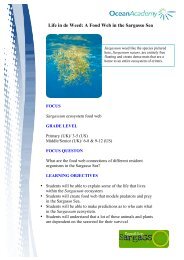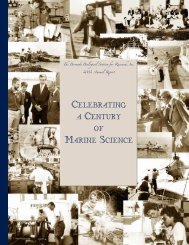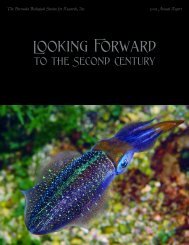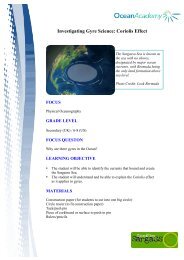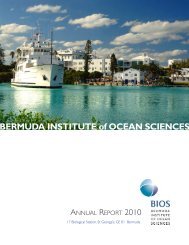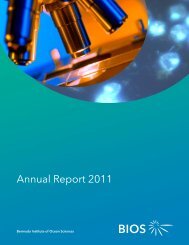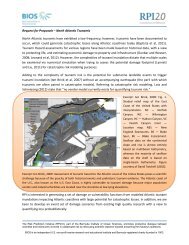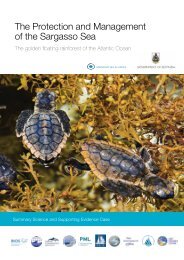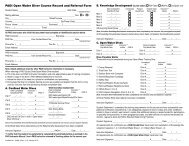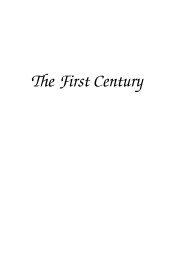BBSR 2001 Annual Report - Bermuda Institute of Ocean Sciences
BBSR 2001 Annual Report - Bermuda Institute of Ocean Sciences
BBSR 2001 Annual Report - Bermuda Institute of Ocean Sciences
- No tags were found...
You also want an ePaper? Increase the reach of your titles
YUMPU automatically turns print PDFs into web optimized ePapers that Google loves.
Protecting theWorld’s MarineEnvironments<strong>BBSR</strong> has long been at the forefront <strong>of</strong> research into the impacts<strong>of</strong> pollutants on corals. This research history led to theestablishment in 1998 <strong>of</strong> the International Center for <strong>Ocean</strong> andHuman Health at <strong>BBSR</strong>, which examines both health <strong>of</strong> the oceanand health from the ocean (such as the potential forpharmaceutical development from marine organisms).Dr. Richard Owen describes the studieshe and the ecotoxicology group at<strong>BBSR</strong> are conducting to identify newpollution threats to corals. As Dr.Owen explains, one such threat, froman increasingly used additive to marineantifouling paints, may require urgentattention on a global basis if we are toprotect the future <strong>of</strong> the world’s coralreefs.PRIOR TO THE EARLY1990s,compounds called organotins werecommonly used in antifouling paintson ships’ hulls. However, research intothe ecological effects <strong>of</strong> organotins suchas tributyl tin (TbT) soon showed thatthese compounds were extremely toxicto marine organisms, particularlyaffecting the reproductive systems <strong>of</strong>shellfish. In the early 1990s, TbT wasbanned for use on boats under 25m inlength. A full International MaritimeOrganization ban on the use <strong>of</strong> TbT onall shipping comes into force in 2003.The industry responded bydeveloping new antifouling paints,using so called “booster biocides”formulated with copper to preventfouling. Of these, two herbicides,Irgarol 1051 and diuron, have becomecommon in boat paints. While globalusage patterns are hard to evaluate, arecent study in the United Kingdomfound that 80 percent <strong>of</strong> antifoulingpaints on the market contained eitherIrgarol 1051 or diuron. Theseherbicides are designed to leach slowlyfrom the paint to prevent buildup <strong>of</strong>bi<strong>of</strong>ilms on boat hulls. A consequence<strong>of</strong> this is a strong potential forcontamination <strong>of</strong> coastal waters bythese herbicides, which are moderatelysoluble and environmentally persistent,with Irgarol 1051, for example,reported to have a half-life in seawater<strong>of</strong> between 100 and 200 days.While there were a number <strong>of</strong>studies showing considerablecontamination <strong>of</strong> coastal waters inEurope by Irgarol 1051, the distribution<strong>of</strong> this herbicide in tropical waters wasuntil very recently unknown. Workundertaken by <strong>BBSR</strong> and funded by the<strong>Bermuda</strong> Government showedsubstantial Irgarol 1051 contaminationthroughout the inshore waters <strong>of</strong><strong>Bermuda</strong>. <strong>BBSR</strong> has also sampled otherareas, such as the Florida Keys and St.Croix, U.S. Virgin Islands, which also



